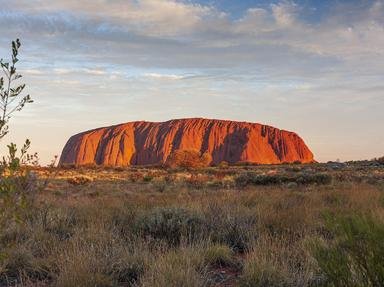Quiz Answer Key and Fun Facts
1. Before there was Adelaide, there was Kaurna country. Within their territory, they had a waterway called Karrawirra Pari, which translates to red gum forest river. When the colonists arrived, what did they call the river?
2. William Barak was a member of the Kulin Nation, the traditional owners of the land that the city of Melbourne was built on. Which infamous criminal did he help the police to track down in the 19th century?
3. The Arrernte people lived in northern Australia for thousands of years before the city of Alice Springs was built. According to their Dreaming story, how was the region created?
4. Indigenous people, including the Ngunnawal, used to travel to the high ground of the Australian Alps to collect and eat bogong moths. Which important city was built on their land?
5. The Darwin region traditionally belonged to a group of Indigenous Australians who had a close relationship with the sea. What was their name?
6. Southern Tasmania was the home of the muwinina people. In the 19th century, English colonials gave the name 'Mount Wellington' to the highest peak in the area. What did the muwinina people call it?
7. The Noongar region was comprised of different dialectal groups around south-west Australia, such as the Whadjuk region where Perth was built. Which animal, common on Rottnest Island, borrowed its English name from the Noongar language?
8. When the First Fleet landed at Port Jackson in 1788, the Europeans encountered the Eora Nation. Which city was built on their land?
9. The area on which the city of Broome was built in northern Western Australia traditionally belonged to a community of people who were granted a portion of the land in 2006. Who became the native title holders of over 5000 square km around Broome?
10. The Yugara people lived along the eastern coast of Australia before the city of Brisbane was built. A word in their language was the inspiration for an Australian clothing company. Which one?
Source: Author
AcrylicInk
This quiz was reviewed by FunTrivia editor
agony before going online.
Any errors found in FunTrivia content are routinely corrected through our feedback system.
